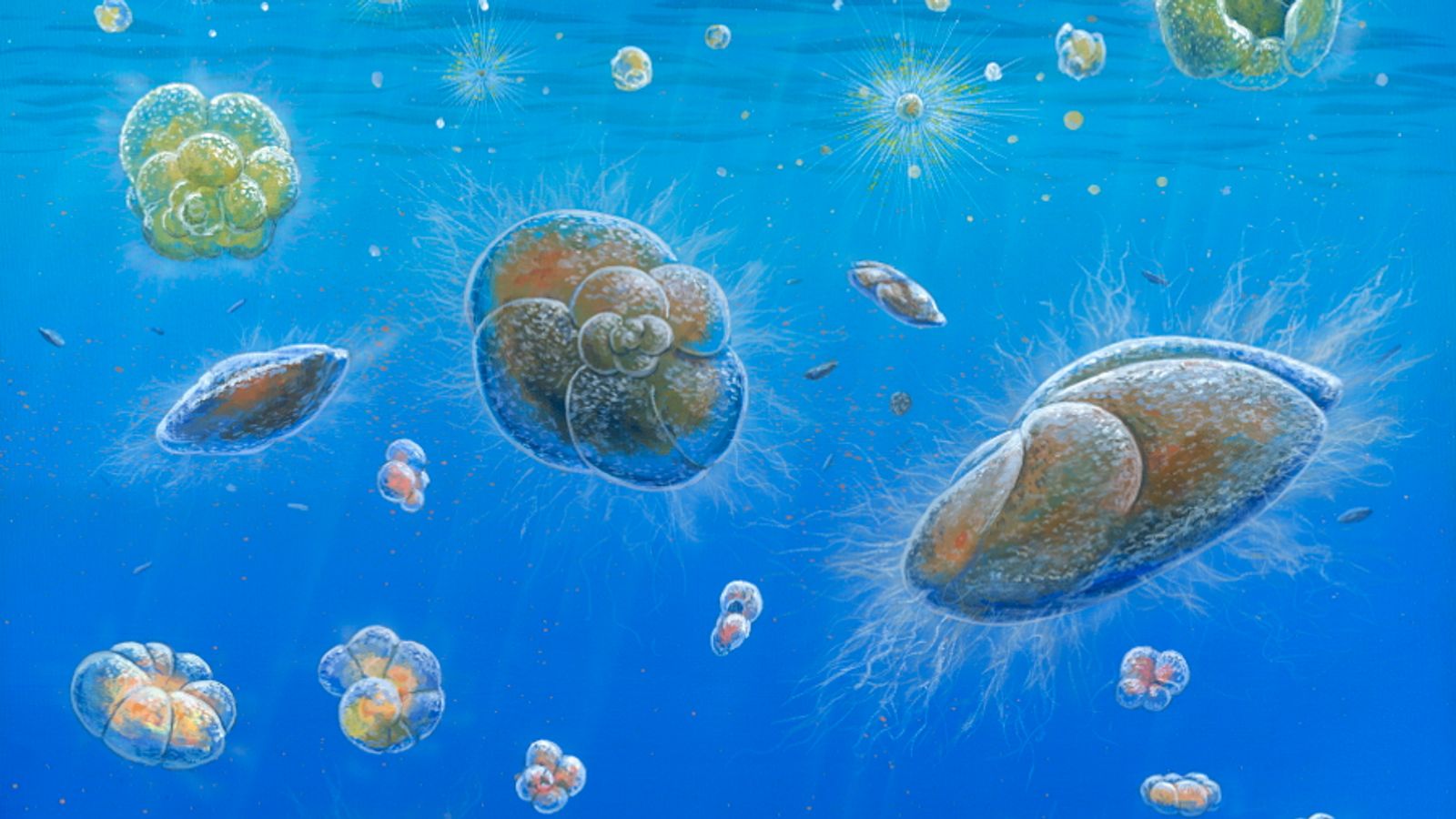New research has revealed how creatures within the so-called twilight zone of the ocean, extending from 200 to 1,000 metres below the surface, have evolved as a result of climate change.
Led by scientists from Cardiff University, the study has been able to track for the first time how the largest and least understood habitat on Earth has developed as oceans have cooled over the past 15 million years.
The habitat is home to some of the most mysterious creatures on the planet, from plankton and jellies through to squid and very strange looking fish.
“It is a true hidden treasure of biomass and biodiversity that is key to the health of our oceans,” according to Cardiff University.
All life in the twilight zone is dependent on “marine snow”, the organic matter that sinks down from the surface, as a source of food.
The study analysed tiny fossil shells obtained from mud at the bottom of the sea to track how deep-sea creatures had changed and diversified over time.
“During our study, we observed evidence of species migrating from the surface to progressively deeper regions of the oceans over the 15-million-year period, which was puzzling,” said palaeontologist Dr Flavia Boscolo-Galazzo, one of the two lead authors of the study.
“The temperature of the water turned out to be key to the mystery,” added fellow lead author Dr Katherine Crichton, who developed a computer model simulation of the way the marine carbon cycle developed through time.
“The interior of the ocean has cooled markedly over this period. That had a refrigeration effect, meaning that the sinking marine snow is preserved longer and sinks deeper, delivering food.”
Dr Boscolo-Galazzo continued: “The cooling of the deep ocean gave life a boost and allowed it to thrive and diversify.”
The researchers penetrated into the mud beneath the floors of all of the world’s oceans to build up a history of what plankton communities would have inhabited the oceans over millions of years.
Fossil plankton contained in the mud contained evidence of the depths that the creatures lived, as well as the density of the marine snow sinking around them.
The team say the results raise fresh concerns about the future of our planet’s oceans as they heat up under the pressure of global climate change.
“Many of the strangest forms of life are found in the ocean depths including comb jellies that look like alien spaceships and ugly fang-tooth fish. But they are also vital for the ocean’s food webs,” said project leader Professor Paul Pearson.
“Deep-living fish account for a billion tonnes of biomass and are a major food source for whales and dolphins and also large diving fish like tuna and swordfish,” Professor Pearson added.
If changes to the ocean temperature impacted that stage of the food-chain it could reverberate through the entire planet’s ecosystem.






















